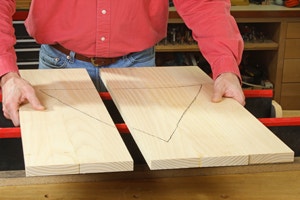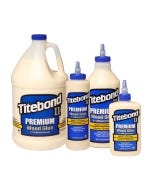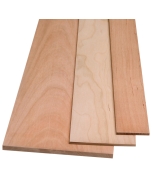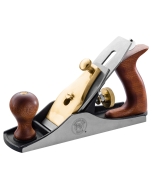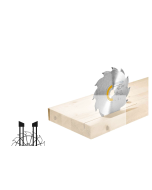Does Ripping and Re-gluing Fix Cupping?
As a woodworker just getting into selling his work, I meet a lot of more experienced people who tell me opposite things about wide boards. One cabinetmaker looked at my 14-inch wide serving board and said that it would cup unless ripped down the middle and re-glued. Others say that's nonsense. Does it depend on the wood (cherry in this case), some absolute limit on width or thickness? And does the ripping and re-gluing really work, and why, since the joined board is virtually one piece again? - J. Clayton Fant
Tim Inman: Cutting and re-gluing does, indeed, really work. If you understand wood, it really works. If you do it right, it really works. If you answer no to any of the above, then it may or may not work. The key is that each alternate smaller piece is turned over or flipped. So, instead of just ripping your 14-inch board into 4 or 5 smaller strips and gluing them back together, you make the cuts, then flip every other one upside down. This lets the grain counteract itself when it tries to cup or warp. Anybody who tells you this is nonsense either has never worked with wide boards, or has always worked with plywood. Plywood is stable. Solid wood is prettier, and preferred. There are exceptions where huge wide boards are used intact. Usually the reason for using the wide board is historical or nostalgic.
Chris Marshall: If your wide board is already flat "in the rough" and properly dried to around eight to 10 percent moisture content, there's no reason why it has to cup at all. Just because the board is wide doesn't doom it to warping. Just look at an antique harvest or trestle table where the top is made from a single piece of wide timber. Chances are good that it was selected for that table top because it was quite flat to start with, and then brought to final flatness with hand planes.
There are many variables that influence lumber distortion, including where the board was harvested from the tree, whether the wood contains internal stresses already, and how the wood has been sawn (flatsawn vs. rift- or quartersawn - the latter two alternatives are more dimensionally stable). Lots of variables ... each piece of wood is unique. By the same token, flat boards can lose some of their stability, too, by the ways in which we use them (finishing one face and not the other, unstable humidity levels in the shop or home environment, sun and water exposure when used for outdoor projects, and so forth).
All of this said, ripping and re-gluing works if you need to flatten a cupped board that's wider than your jointer and planer can handle. Rip it into narrower pieces that are flatter than the whole, joint their first faces completely flat, then run them through the planer to make the opposite faces parallel to the first ones. What you end up with, of course, are narrower pieces that are flat and square. Re-glue those, and you'll get a wide workpiece that's also flat. It'll be thinner from the surfacing work, and an amalgamation of pieces, but it will be flat.
If a wide board is flat to start with, don't rip it "just because." Consider surfacing it with hand planes instead of machines, and leave that wonderful width and continuous grain the way nature intended it. However, if machines are a better surfacing solution for you, for whatever reason, ripping and re-gluing definitely works. Use a band saw for the ripping stage, if possible. You won't lose as much material to sawdust, and it will be easier to blend the grain pattern of the individual boards together again ... although it won't be a perfect match.
Keep the inspiration coming!
Subscribe to our newsletter for more woodworking tips and tricks
